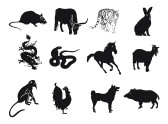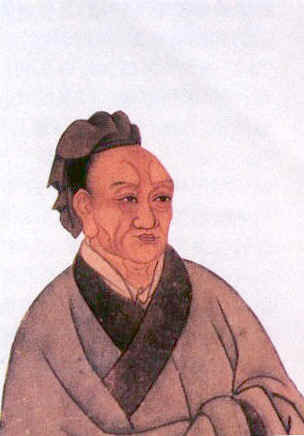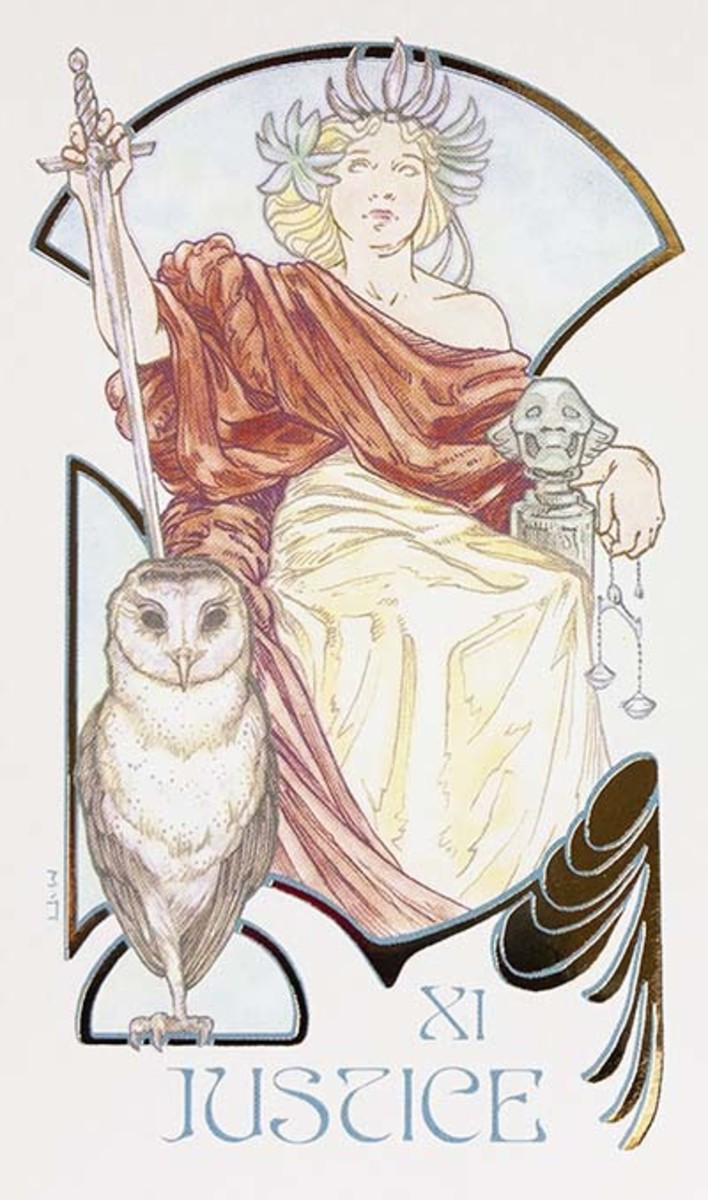Chinese Astrology - A Brief History


Chinese Zodiac History
The Chinese Zodiac is familiar to billions of people around the world. There are different forms or variations of Chinese astrology. Some are regional; others embrace the concept of Feng Shui. Yet, there are certain common aspects that remain constant. The Circle of Animals, the Ming Shu is the most recognizable facet. It is this particular feature that has made Chinese astrology fashionable in Western civilization, although the use is often restricted to knowing what animal an individual is.
This is an incomplete or abbreviated understanding of the system. Chinese Astrology involves much more than the knowledge you were born in the year of the Dragon or Hare. It involves more specific information including the day of your birth, the element which governs your animal and your month and day animals as well. However, before it is possible to explore the fascinating aspects of Chinese Astrology, consider, first, its ancient lineage.
The Legendary Emperors and the Early History of Astrology
It is often argued that the origins of Chinese Astrology date back to the oral traditions of the Chinese people. However, the history of the Chinese lunar calendar dates back to approximately the time of the legendary Emperors of the predynastic period. These men included:
- Huang Ti (the Yellow Emperor) – a patron Saint of Taoism who has been credited with the creation of the Chinese calendar
- Shao Hao (2598-2514BC), Huang Ti’s son – “instituted the music of the Great Abyss”
- Fu Hsi (Subduer of Animals) –the introducer of pictograms and regulator of marriage
- Chuan Hsu (B.C. 2514-2436) Fu Hsi’s Nephew– established a type of officer to to preside over the worship of God and Earth, in order to form a link between the spirits and man," and also "caused music to be played for the enjoyment of God.
- Kao Hsing – Fu’s son
- Shen Nung (the Divine Farmer) – developed the agricultural system in China
The first cycle of the Chinese Zodiac is from around 2637 B.C. During this period the Yellow Emperor – Huang Ti compiled documentation of a type of astrology. It was based on the largest path the moon made as it passed certain clusters of stars.
The earliest surviving records, however, date from 2,677 BC. Huang Ti introduced a method for configuring time into an orderly fashion. He decided upon cycles consisting of 60 yüan or years.
This new system relied on the positions of groups of stars or asterism as well as lunar movements. These had been recorded previously – as in 1,500 years ago. Huang Ti’s Prime minister, Tajao helped to study the stars. He used an observatory that the Emperor caused to be erected in 2,608BC. The focal group of stars was the Pleiades. Identified by the Emperor and his Prime Minister were 4 distinct arcs of asterisms created by central bright fixed stars. These 4 groupings became associated with the seasons and the four compass directions. The fixed stars became the very basis for astrologers to time the activity of the moon. Each became known as one of the Moon’s sieu or mansions.
In order to maintain his own system at the time, Huang Ti deliberately destroyed all literature – books and documents, sparing only those schools that ran parallel to his own thought. Among the books he chose to preserve were some pseudo-astrological books that found their roots in old peasant tales. This all was tied to his concept of astrology. Huang Ti felt through astrology humans could attain what he perceived as the natural order and harmony of humankind. All would descend from him as he, as Emperor, was himself descended from celestial roots.
The system being established, another Emperor, Chuan Hsü (2514-2436 BC), published an ephemeris. In it are revealed the close association between planets and the basic elements that comprise the Chinese system: Water, Metal, Fire, Wood and Earth. These five agents became known as the Wu Hsing or simply hsing. As the system progressed, other elements were added. Chueni contributed the concept of Celestial Stems or t’ien kan. These are the 10 subdivisions of the Wu hsing.
The first written horoscope written down dates from the Shang dynasty (1700-1046 BC). This sample, rendered on a tortoise shell, incorporates the 12zodiac signs.
By the time of 1100BC, under the Chou (or Zhou) Dynasty (1122 – 221BC) Astrology was not a whimsical art or the practise of charlatans. It was recognized in China as a scholarly science. The I Ching (Book of Changes) refers to such things as asterisms and astrology. Within this period, too, you have the influences of Confucius or Kongzi (531BC-479BC) and the legendary Lao Tse (Laozi) of the 6th or 7th century.
Even during the troublesome times referred to as the Warring States Period (475-221 B), artifacts indicate the presence of Chinese astrology as part of the culture. In 300 BC, the most famous astrologer was Tsou Yen. About astrology he wrote: "When some new dynasty is going to arise, heaven exhibits auspicious signs for the people.”
The Han and Tang Dynasties – Their Contributions to Astrology
With the opening of the Silk Road under the Han Dynasty (206 BCE – 220 CE) to trade, astrological methods practised by the Indians and Arabs entered the country and became part of the Chinese system. In particular, these races added their modes of calculation. At this time, the entire concept of Yin and Yang, as well as the theory of the elements solidified to create all the familiar cultural aspects associated with China including Confucianism and the perceptions of Heaven and Earth.
Under the Hans, China was blessed with 2 noteworthy astronomers/astrologers and historians. They were father and son. Sima Tan and his son, Sima Qian supervised the counting and mapping of the stars. Sima Qian had 28 observers under him. He was also responsible for creating a new and very accurate calendar. His findings and calculations noted there were 365.25 days in one year and a month consisted of 29.53 days.
With or without an official astrologer, the Chinese method of astrological prediction continued to exist. During the North Zhou Dynasty (557-581 AD), the Chinese Zodiac was a popular means of determining the birth year of an individual. Under the Tang Dynasty (AD 618 –AD 907) personal astrology had increased substantially. An encyclopedia was published focusing around the entire art of telling fortunes of all types.
By the time the Europeans came into contact with the Chinese, the system had developed into what it is today. It was flourishing throughout China. Marco Polo (c. 1254 – January 9, 1324)wrote in his journals that: “These astrologers are very skilful in their business and often their words come to pass, so the people have great faith in them.”
Modern Times
By the 19th century, Chinese astrology was common. Astrologers continued to draw upon the past to create horoscopes for individuals and states. They did so using a circular pattern within which were 12 segments. Towards the end of the 19th century, however, they decided to switch. In order to modernize their methods, they adopted a distinctly Western astrological pattern – a box-shaped diagram in which to place the pertinent material. Beyond such cosmetic or operational changes little has altered in the system over the past few centuries.
In the 21st century, astrology remains a very popular form of divination in China. It is found in Japan, Vietnam, China, Korea and other Asian countries to which it migrated. While it has some aspects in common with its Western counterpart, the Chinese Zodiac is unique. It is used readily by both trained practitioners and untaught individuals. It can be applied as light-heartedly as a daily Western horoscope or as seriously as a prediction made upon a child’s birth.
Conclusion
The Chinese Astrology is an intricate and ancient system of divination. Its history spans back into the past. From its early beginnings it developed until it has become a common tool of astrologists in the Asian world.
Major References:
Miller, AR and JM Brown. The Complete Astrological Handbook For The Twenty First Century. New York: Schocken Books, 1999.
Walters, D. The Chinese Astrology Bible. New York: Sterling, 2009.





